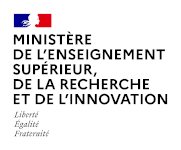`Rome Wasn’t Digitized in a Day`: Building a Cyberinfrastructure for Digital Classics
Classics is a complicated and interdisciplinary field with a wide-ranging group of subdisciplines and a seemingly endless variety of technical challenges. Digital classics, for the purpose of this report, is broadly defined as the use of digital technologies in any field related to the study of classical antiquity. This report concentrates on projects that have focused on classical Greece, Rome, and the ancient Middle and Near East, and generally on the period up to about 600 AD. It offers brief coverage of projects with content from the medieval era, largely in the area of manuscript studies. The report explores the state of the art in digital classics in terms of what projects exist and how they are used; examines the infrastructure that currently exists to support digital classics as a discipline; and investigates larger humanities cyberinfrastructure projects and existing tools or services that might be repurposed for the digital classics.
To set the context, this report opens with an overview of the history of computing in classics. This is followed by a look at large multidisciplinary classical digital libraries (i.e., those of the ancient Near East, Greece, and Rome) and the types of advanced services and technologies they use and are likely to require. Next is a summary of the various disciplines of digital classics, the major projects in each, and the major technologies in use. Next, an overview of digital humanities user studies attempts to get at
the needs of users of these projects, as no user studies of digital classicists could be found. An overview of requirements for a cyberinfrastructure for digital classics, along with a survey of relevant projects, follows. The report concludes by presenting recommendations for a humanities cyberinfrastructure and relevant national and international cyberinfrastructure projects.






